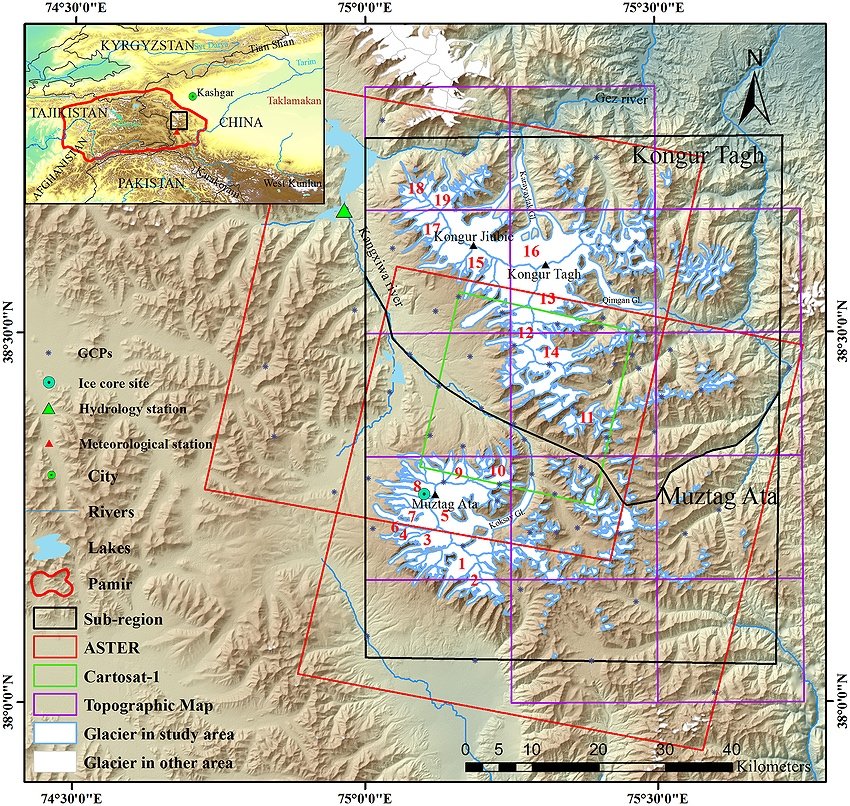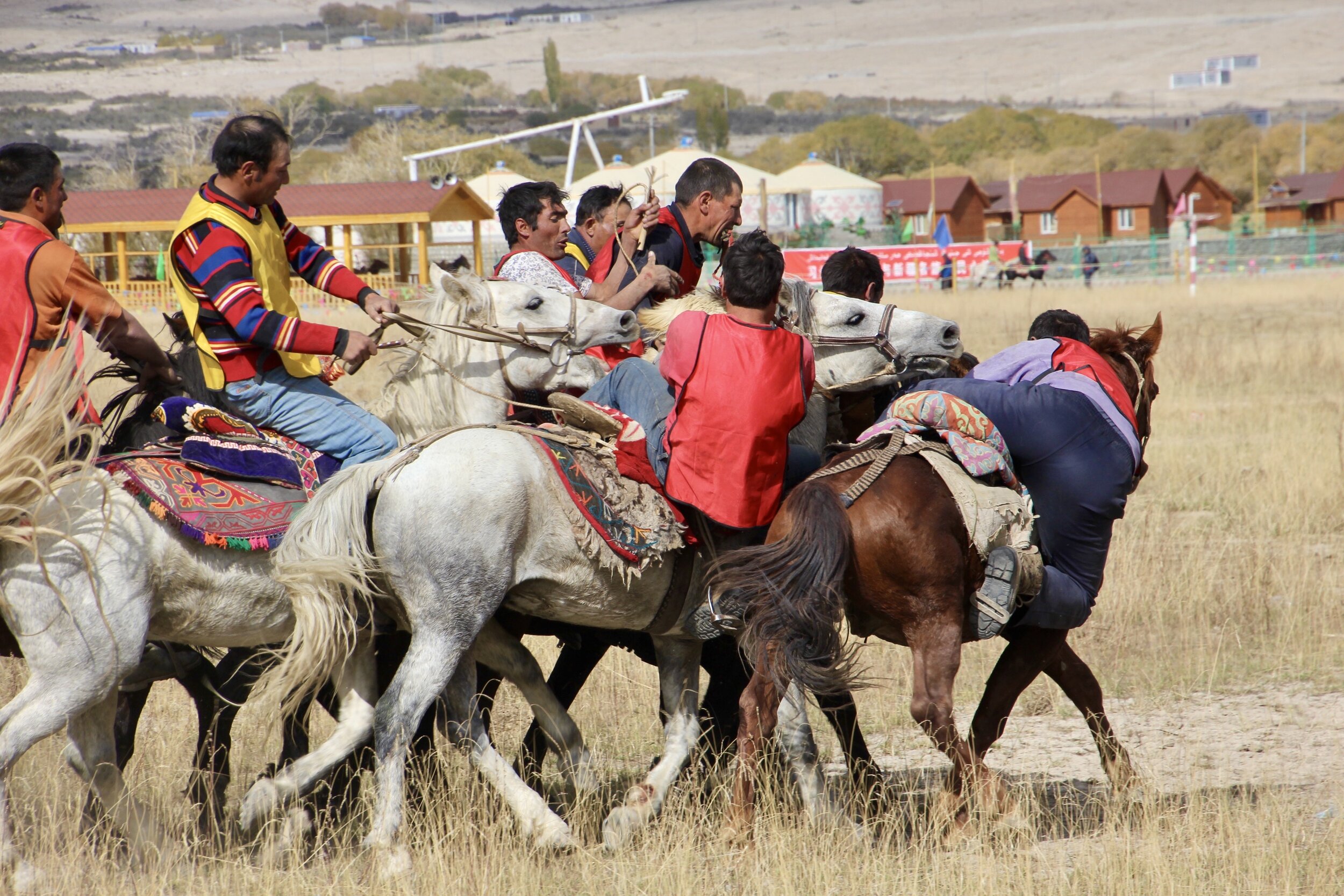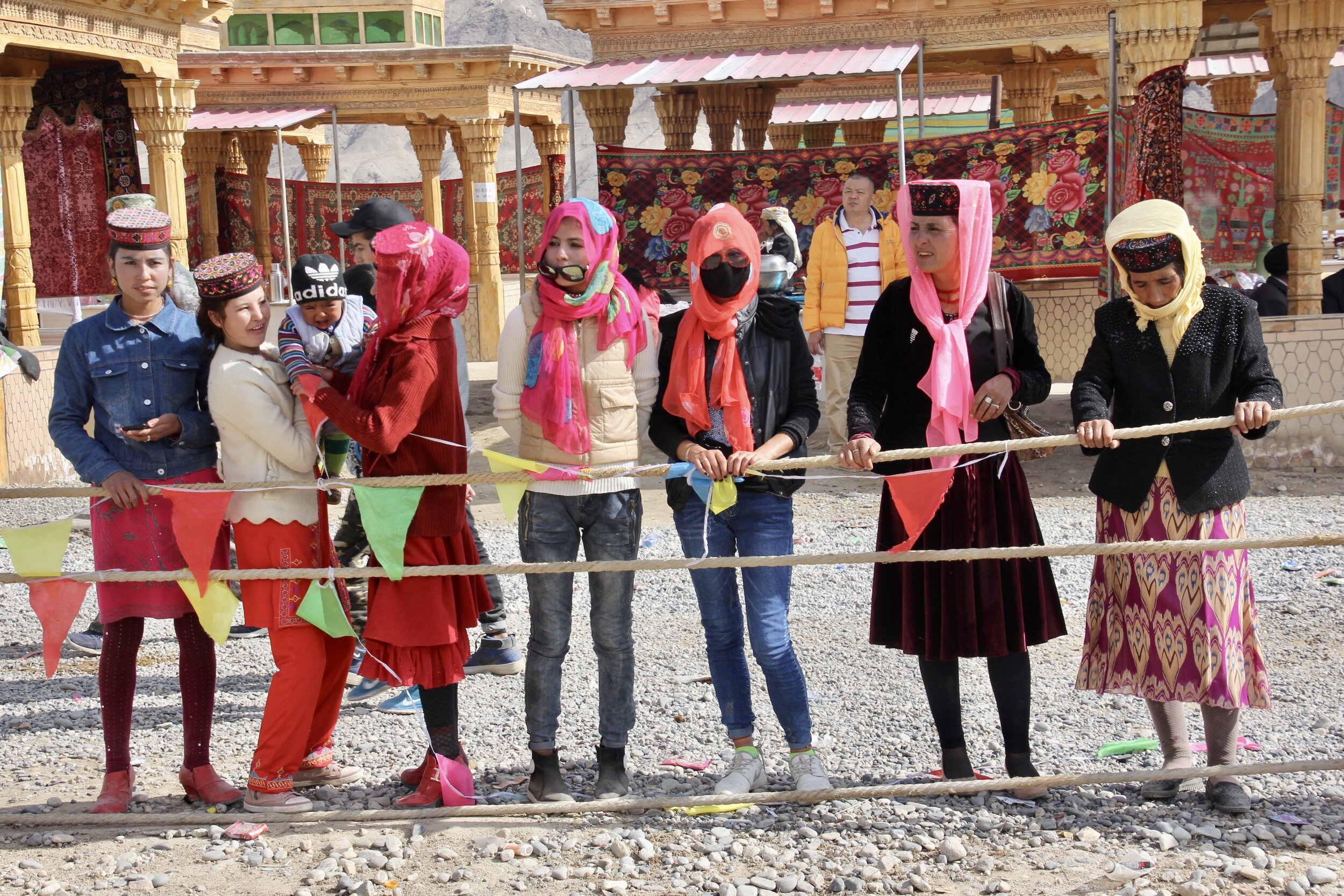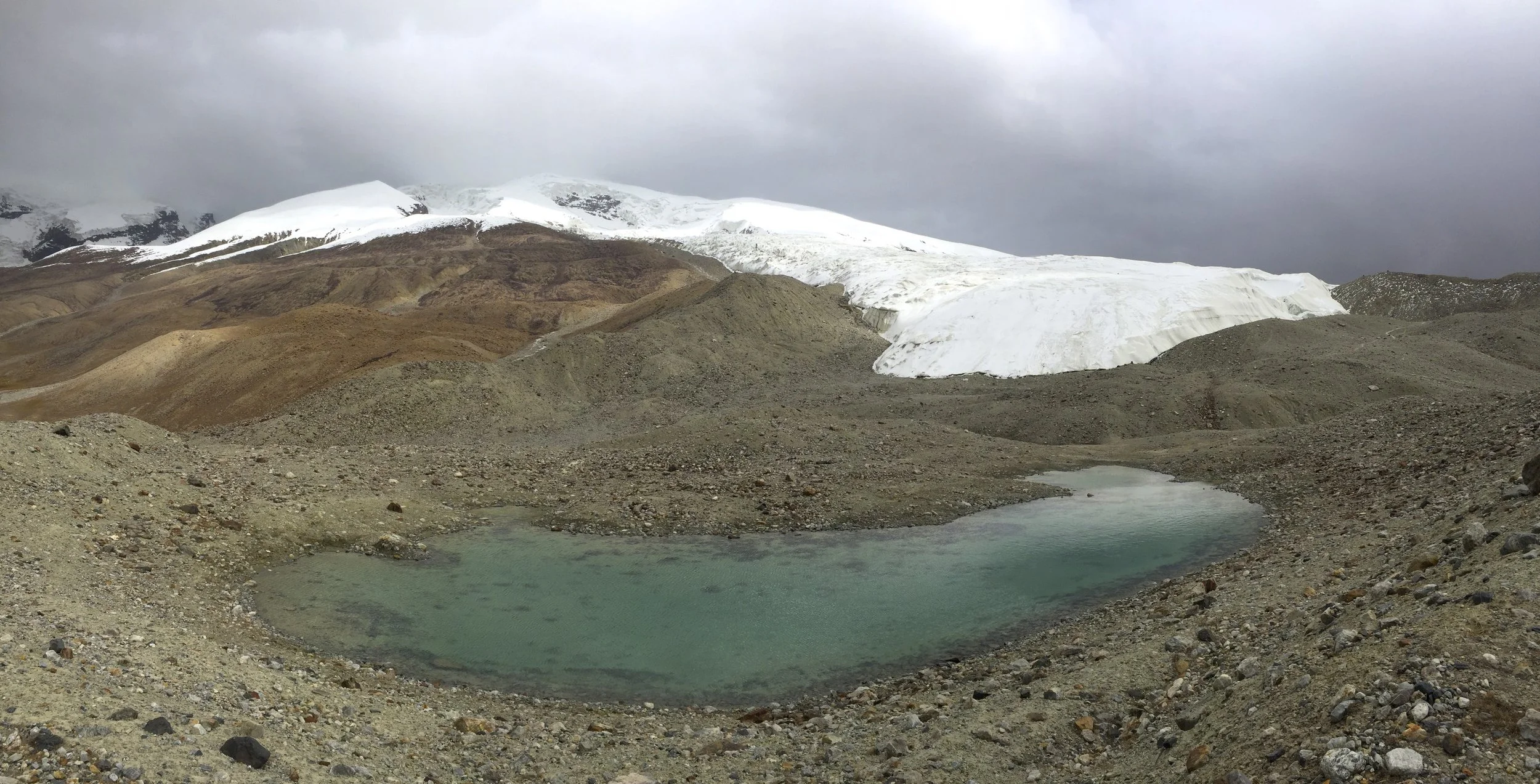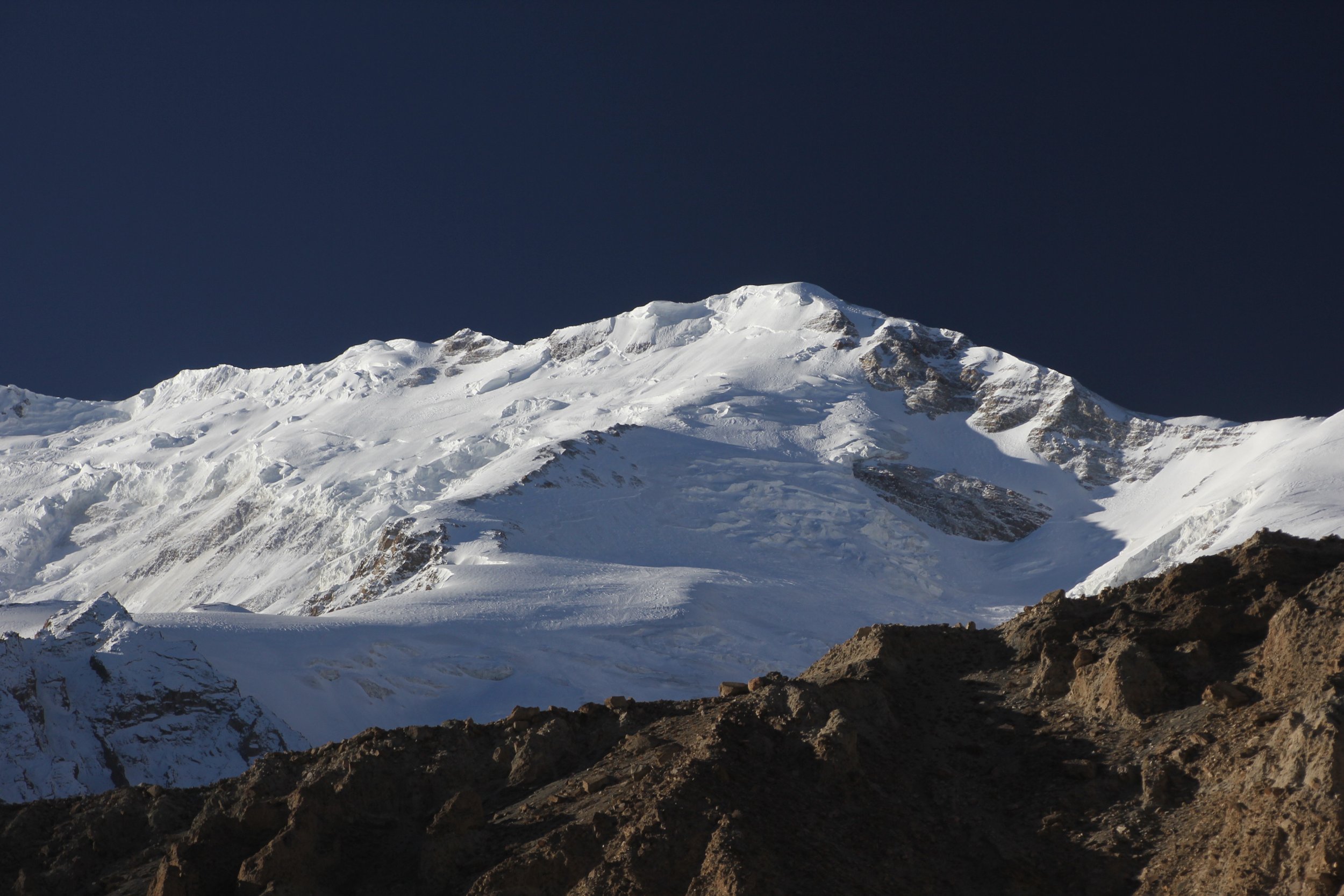The map of the Karakoram Highway (KKH). The northern part of the KKH cuts through the Chinese part of the Pamir Mountians
Muztagh Ata and Karakul Lake
Mt. Kongur
A Tajik Man at Lake Karakul
Inside the yurt near Lake Karakul
The Pamir Highway and the Muztagh Ata
Tashkurgan Fort
In Tashkurgan I was lucky to see the local festival and the Tajik game of Buzkashi (Persian: بزکشی, literally "goat pulling" in Persian) is a Central Asian sport in which horse-mounted players attempt to place a goat or calf carcass in a goal. Similar games are known as kokpar, kupkari, and ulak tartysh in Kyrgyzstan and Kazakhstan, and as kökbörü and gökbörü in Turkey, where it is played mainly by communities originally from Central Asia.
Buzkashi began among the nomadic Turkic peoples who came from farther north and east spreading westward from China and Mongolia between the 10th and 15th centuries in a centuries-long series of migrations that ended only in the 1930s.
The game consists of two main forms: Tudabarai and Qarajai. Tudabarai is considered to be the simpler form of the game. In this version, the goal is simply to grab the goat and move in any direction until clear of the other players. In Qarajai, players must carry the carcass around a flag or marker at one end of the field, then throw it into a scoring circle (the "Circle of Justice") at the other end. The riders will carry a whip to fend off opposing horses and riders. When not in use - e.g. because the rider needs both hands to steer the horse and secure the carcass - the whip is typically carried in the teeth.
The calf in a buzkashi game is normally beheaded and disemboweled and has 2 limbs cut off. It is then soaked in cold water for 24 hours before play to toughen it. Occasionally sand is packed into the carcass to give it extra weight. Though a goat is used when no calf is available, a calf is less likely to disintegrate during the game. While players may not strap the calf to their bodies or saddles, it is acceptable - and common practice - to wedge the calf under one leg in order to free up the hands.
In Tajikistan and among the Tajik people of Tashkorgan in China's Xinjiang region, buzkashi games are particularly popular in relation to weddings as the games are sponsored by the father of the bride as part of the festivities.
In Tajikistan, buzkashi is played in a variety of ways. The most common iteration is a free-form game, often played in a mountain valley or other natural arena, in which each player competes individually to seize the buz and carry it to a goal. Forming unofficial teams or alliances does occur, but is discouraged in favor of individual play. Often, dozens of riders will compete against one another simultaneously, making the scrum to retrieve a fallen buz a chaotic affair. Tajik buzkashi games typically consist of many short matches, with a prize being awarded to each player who successfully scores a point.
Female Section
Men Section
A Tajik men wearing the traditional hat.
The traditional Tajik dress
Muztagh Ata
Muztagh Ata
Mustagh Ata
Mustagh Ata
Approaching storm over Mt. Kongur
Mt. Kongur
Kongur from East
Kongur
Muztagh Ata
Afgani Lapiz Lazuli. Lapis lazuli has been mined in Afghanistan and exported to the Mediterranean world and South Asia since the Neolithic age, along the ancient trade route between Afghanistan and the Indus Valley, dating to the 7th millennium BCE. Quantities of these beads have also been found at 4th millennium BCE settlements in Northern Mesopotamia, and at the Bronze Age site of Shahr-e Sukhteh in southeast Iran (3rd millennium BCE). A dagger with a lapis handle, a bowl inlaid with lapis, amulets, beads, and inlays representing eyebrows and beards, were found in the Royal Tombs of the Sumerian city-state of Ur from the 3rd Millennium BCE.
The main street in Tashkurgan.
A butcher shop in Tashkurgan
Karakoram Highway in 2001
Chinese Pamir - the road from Kunjerab Pass to Tashkurgan in 2001
Chinese Pamir - border area with Afghanistan in 2001
The ride from Sost Pakistan to Tashkurgan is organized in the special bus. This was back in 2001.
Karakul Lake and Kongur massif in 2001.
Karakul Lake and Muztagh Ata in 2001.
Kunjerab Pass - China - Pakistan border in 2001
Chinese border marker - Kunjerab Pass
My first trip to Kashgar in 2001. It was a memorable trip - our Pakistani guide used us to smuggle Chinese alcohol to Pakistan for the chief of police of the North West Frontier Province. We were whisked through the Pakistani customs and delivered the goods to the chief shortly thereafter. On the way from China, the entire Pakistani bus was full of contraband. The Pakistani merchants gave a bottle of Chinese whisky to the Pakistani guard that stopped and boarded the bus along the way. The guard drank the entire bottle in 30 minutes, quickly passing out. The bus stopped, the guard was carried out and placed on the side of the road and we moved on.
Kunjerab Pass. To get to China, we had to take a special bus from Sost to Tashkurgan with a stop at the Kunjerab Pass. The Pass had no guards or checks. The Chinese customs were in Tashkurgan and the Pakistani customs were at Sost. The bus trip took all day due to stops etc.
Kunjerab Pass
Looking down to Pakistan from Kunjerab Pass
Karakoram Highway from Sost to Kunjerab Pass in 2001.



